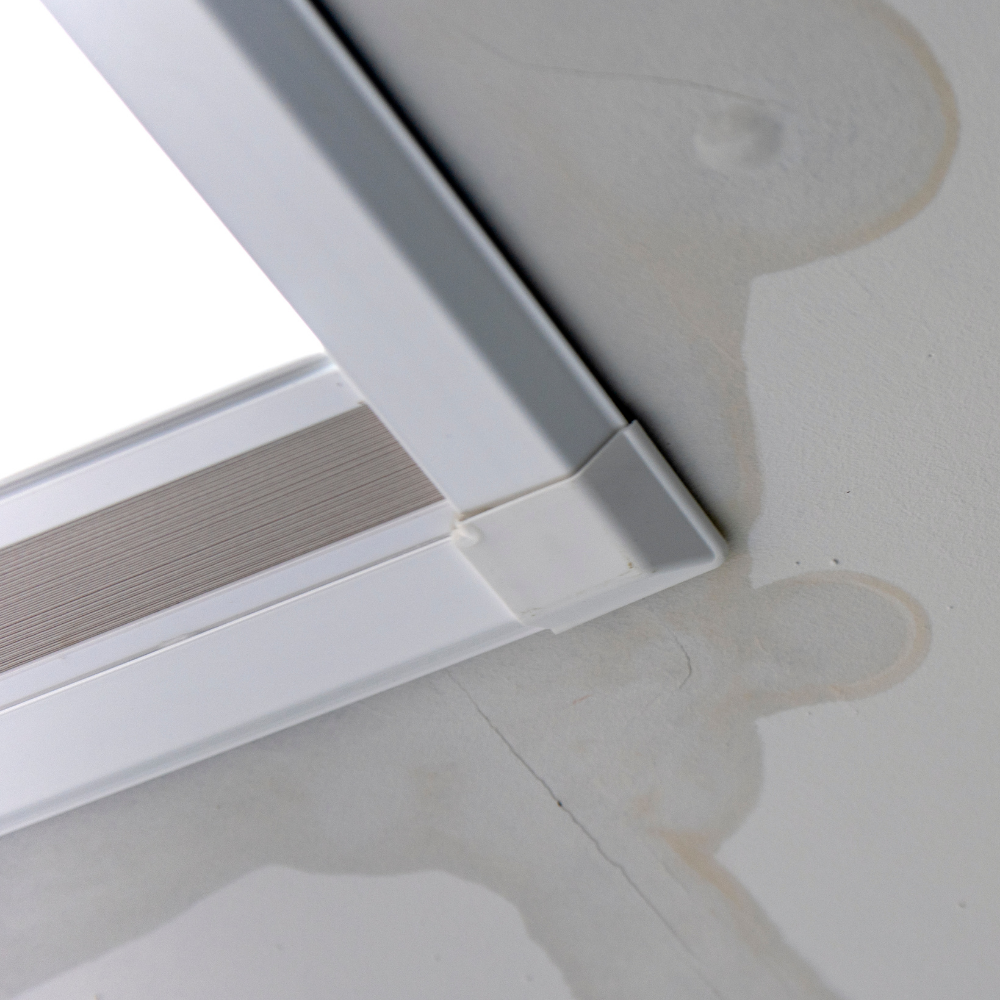
3 Ways to Identify & Solve Commercial Roof Leaks
3 Ways to Identify & Solve Commercial Roof Leaks https://pbroofingco.com/wp-content/uploads/2023/10/NewLookRoof•LeakingSkylight•LouisvilleKY.png 1000 1000 PB Roofing https://secure.gravatar.com/avatar/ee28a6949ea6af745b0ddec55b8b9ce1?s=96&d=mm&r=gIf you come across a pool of water in your commercial property or notice stains on a ceiling tile, it is important to be concerned about potential roof leaks. Actively addressing a commercial roof leak is crucial, as the roof serves as protection against adverse weather conditions and damage caused by water infiltration. Nobody wants to deal with structural, equipment, or product damage, or put the safety of tenants or clients at risk due to slip and fall incidents.
“70% of commercial property damage comes from water intrusion. In other words, commercial roof leaks matter, a lot.” (Energy Shield)
3 Ways to Identify Commercial Roof Leaks
Roof leaks can occur for several reasons, including storm damage, rooftop activity, rooftop equipment failure, lack of proper maintenance, or simply due to the passage of time. Here are some signs that indicate a roof may be leaking:
- Stained Ceiling or Walls: When exposed to water, the appearance of the ceiling or walls may change. Discoloration, stains, bubbles, or blisters, as well as efflorescence (a deposit of salts that can form on the surface of porous materials) on masonry surfaces, are clues of likely water intrusion.
- Odor: A musty smell or unusual dampness in the air could be a result of water inside the building. Mold tends to flourish in moist environments, which can create a musty odor.
- Inside Puddles / Dripping Water: This is the most apparent sign of a roof leak. However, it’s important to note that other causes might exist as well. For instance, if water is dripping from a roof-mounted HVAC unit or duct, it could be due to condensation or a roof leak that is dripping onto the ductwork. Sprinkler systems or overhead water lines are often mistakenly identified as roof leaks. To identify the source of a suspected leak, take some time and use a good flashlight to thoroughly investigate.
If you’re experiencing a leak in your facility, you are obviously wondering about how it happened. Typical sources of commercial roof leaks include failed caulk or flashing details, punctures, or slices in the roof surface, poorly maintained or malfunctioning rooftop HVAC units, fans, or other equipment, roof movement at parapet walls or expansion joints, or any other details found on rooftops.
“More than anything else, property managers must prioritize safety when a roof leak is discovered. Property managers should never climb onto the roof and attempt to find the source of the leak themselves. This can be incredibly dangerous and potentially deadly, especially if the leak is discovered in severe storms.” (Property Manager Insider).
3 Ways to Solve Commercial Roof Leaks
- Mark the Area: To assist a roofing leak response team in locating the problem area on the rooftop, it would be helpful if you could either place a mark on the floor, the ceiling, or a structure where the drip can be seen. Doing this while the leak is occurring is ideal, as it will enable the technicians to locate the specific spot even if it dries later. To ensure safety, please inform tenants about the leak and consider roping off the area to prevent slips or falls on slippery surfaces.
- Damage Control: To minimize any potential or further damage, it is important to clear the affected area of any valuable equipment or supplies. If clearing the area is not feasible, covering items with plastic or a tarp is recommended for protection.
- Keep your Eyes Peeled: Please keep in mind that the visible water entering the building may not necessarily be due to the roof directly above that area. Water can travel a significant distance within the roof, ductwork, or structural members. Please look for any additional details in the leak area that may assist technicians in identifying the underlying problem, such as wet sprinkler piping or conduits, drips from ductwork, or water on structural elements. There is a possibility that the roof has other damage or requires further work, especially if the leak is due to storm damage or other external weather factors.
Commercial property facilities are not just a capital investment but also a valuable long-term asset. To ensure the protection of this investment, it is crucial to engage in consistent and professional roof maintenance.
This proactive approach helps in identifying and resolving roof issues before they escalate into significant damage. By prioritizing proper maintenance, business owners can enjoy peace of mind and dedicate their attention to their core operations, rather than being preoccupied with roof concerns.
PB Roofing’s THREATCheck
Having a great maintenance plan usually goes right along with regular inspections. A professional roofing inspection along with a thorough maintenance plan means that your roof will always be performing at its best. And this may add some years to the lifespan of your roof, saving you quite a bit of money.
Our THREATCheck is one enhanced visual inspection to identify deficiencies and provide recommendations for repairs or replacement. Our Plus Package features the same, with a bi-annual inspection plan. Photo report included.
Blog Back Issues Resource
“The Dangers Above: How to Fight Common Commercial Roof Damage” October 2022
